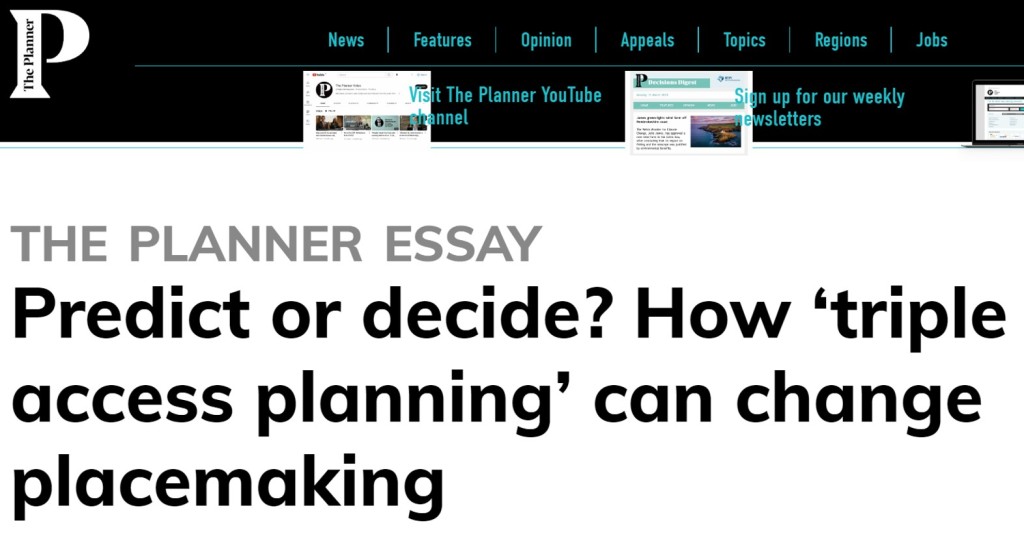Hidden in plain sight 👀. Thank you to The Planner RTPI and Simon Wicks 🤘 for allowing me to write The Planner Essay this month on… wait for it … Triple Access Planning.
Our new practitioners’ handbook on TAP emphasises three important dimensions of planning that have been hidden in plain sight:
1️⃣ 👀 DIGITAL ACCESSIBILITY 📱💻
“It’s quite remarkable that while digital accessibility is everywhere in society, it is almost nowhere and invisible in transport and spatial planning”
“Digital accessibility influences transport system use in many ways: substituting for, stimulating, supplementing, redistributing, improving the efficiency of, enriching and indirectly affecting travel. If we ignore it in our analysis we are simply inviting uncertainty into the planning process.”
2️⃣ 👀 UNCERTAINTY 🤷❓
“Uncertainty about the future is not new. Lao Tzu, a Chinese philosopher, said more than 2,000 years ago that ‘those who have knowledge don’t predict and those who predict don’t have knowledge’. The French philosopher Voltaire said in the 1600s, ‘uncertainty is an uncomfortable position but certainty is an absurd one’.
Paying heed to philosophy in a world obsessed with STEM (science, technology, engineering and maths) makes sense. Yet in transport planning we seem to have favoured being precisely wrong instead of approximately right in our analysis. Road traffic forecasts until recently had a ‘central projection’ which was sometimes referred to as ‘the most likely future’. And false precision is alive and well – take a look in the updated National Networks National Policy Statement if you don’t believe me.”
3️⃣ 👀 ACCESS FOR GOODS 🚛📦
“Also hidden in plain sight in much planning is access for goods. We have been so preoccupied with movements of people that movement of goods has often been neglected. As online shopping and purchasing continue to grow, so too have goods movements been indirectly and substantially affected by the advancing digital age.
Like gifts under the Christmas tree from Santa magically appearing from nowhere, it can seem that goods arrive at our doors as if by magic – a few clicks online, and days, or sometimes only hours, later what we’ve purchased arrives at our door. The reality is that we rely heavily upon goods movements and related supply chain logistics; and our built environments are affected by how access for goods is fulfilled. TAP aims to bring access for goods more centrally into the planning task.”
Predict or decide? How ‘triple access planning’ can change placemaking
Published by
on


Leave a comment